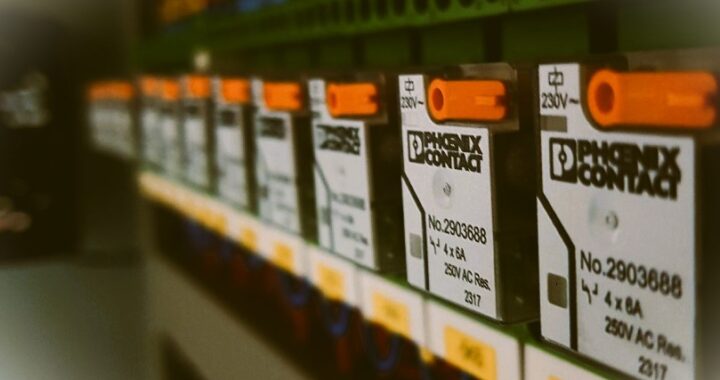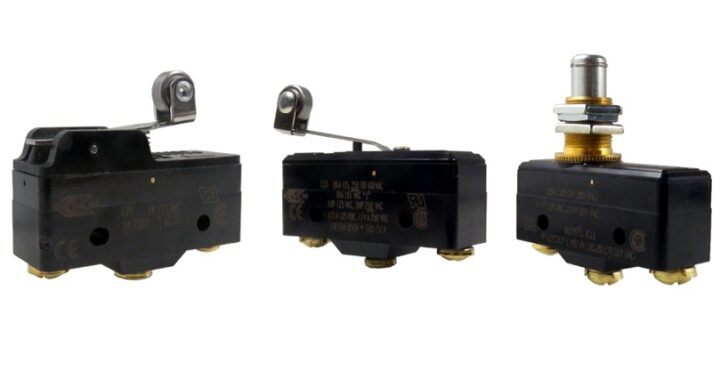Electromechanical Relay Working Principle and Construction
The last 20 years have seen an increase in competition throughout the world. This discovery has inspired product designers to include innovation. The automation of the items’ functionality is one strategy these designers utilize to inject innovation. To automate the tasks carried out by the items, these designers either select the automating devices that are currently on the market or create brand-new products. To manage their operations, many of these automated gadgets rely on joining and disconnecting electrical circuits by turning them on and off the same. Electromechanical relay is primarily used in this type of automation which involves connecting and disconnecting electrical circuits. Therefore, understanding the electromechanical relay working principle is crucial.
What is an Electromechanical Relay?
The electromechanical relay is a remote-controlled switch that responds to input signals given to its coil by opening and closing its contacts. It can switch several circuits either separately, concurrently or sequentially.
The electromechanical relay serves as a conduit between the power and the control circuit. The relay requires only a little amount of power to activate but it can control devices that consume much more power.
Low power is required to switch the contacts on the coil that operates the relay. High-capacity loads such as contactors and protection devices can be connected to the relay’s output connections.
Other definitions of the electromechanical relay in the automation market are:
- Electromagnetic relay
- Auxiliary relay
- Miniature relay
- Power relay
- Pluggable relay
- Electrical relay
- Control relay
The electromechanical relay has a wide range of applications. The primary goals are:
- Switching of large electrical loads with a low voltage control circuit.
- Reducing a higher voltage to a control voltage level.
- Isolating the load circuit and control circuit galvanically.
- Converting a single input to multiple outputs.
“Get high-quality relays at a great price.”
Electromechanical Relay Construction

The main components of an electromechanical relay are:
Armature
The armature of the relay is the moving component of the magnetic system that functions through an actuator or the moving relay contacts to close and open the magnetic circuit.
Contacts
Contacts are moved by the magnetic system to switch the load circuit. Contacts carry the main energy.
Connection pins
Pins connect the contact system to the load or the relay sockets.
Coil
The relay coil generates the magnetic field to actuate the armature and the contacts. It can be supplied with AC or DC.
PCB
PCB of a relay consists of protective circuitry and status display.
How Does an Electromechanical Relay Work?
An electromagnet serves as the electromechanical relay’s operating system. A magnetic flux is created through a ferromagnetic core by an electrical current in a coil. The resulting force is applied to the armature which uses mechanical transmission to shift the contacts from the idle state into the working position. Through the ‘de-energizing’ of the coil the armature returns to its idle state.

Relay has a simple working principle. You can check the video below for a better understanding.
Output Contacts
An electromechanical relay has mechanical contacts which are designed as normally open, normally closed or change-over contacts.
1. Normally open contact
A contact is referred to as a closing, normally open or working contact if it is open when the coil is de-energized. It closes when the coil is charged with current flow.

2. Normally closed contact
A contact that interrupts the circuit when the coil is activated is called an opener, normally closed or break contact.

3. Change-over contact
A combination of normally closed and normally open contact is referred to as a changer, change-over or switch-over contact. The roots of the normally open and normally closed contacts are connected. Therefore the change-over contact has three connections.

Contact Types
1. Standard contact
The standard contact consists of a pair of contact pills and depending on the contact material is predominantly used for control and power relays.

2. Double contact
The double contact has two pairs of contact pills. The contact reliability is increased by up to a factor of 100 as a result. It is used in signal and control relays.

3. Pre-run contact
The pre-run contact consists of a contact fitted with a highly heat-resistant contact material and of a later closing contact consisting of a further contact material featuring good electrical conductivity at a nominal load. This contact is mainly used for switching high inrush currents.

Contact forms

3 pin, 4 pin and 5 pin relays
Relays are also available with different pin configurations like 3-pin, 4-pin and 5-pin relays. How these relays are operated is shown in the below figure:

In conclusion, the increasing competition in the world market has driven product designers to include innovation in their designs. One such strategy is to automate the functionality of items. Electromechanical relays have become a primary tool for designers in automating devices, serving as a conduit between power and control circuits. They require only a small amount of power to activate but can control devices that consume much more power. The electromechanical relay has a wide range of applications, including switching large electrical loads with a low voltage control circuit, reducing higher voltage to a control voltage level, isolating the load circuit and control circuit galvanically, and converting a single input to multiple outputs. Understanding the components and workings of an electromechanical relay is crucial for designers to implement them effectively in their products.

 Types of Timer Relays and Their Applications
Types of Timer Relays and Their Applications  Relay Applications: Real-Life And Industrial Examples
Relay Applications: Real-Life And Industrial Examples  Types of Micro Switches and Their Applications
Types of Micro Switches and Their Applications  Best Voltage Testers for Home Use: 2023 Edition
Best Voltage Testers for Home Use: 2023 Edition  Advantages of Transducers for Optimal Measurement
Advantages of Transducers for Optimal Measurement  Advantages of Infrared Sensors: Improved Accuracy and More
Advantages of Infrared Sensors: Improved Accuracy and More